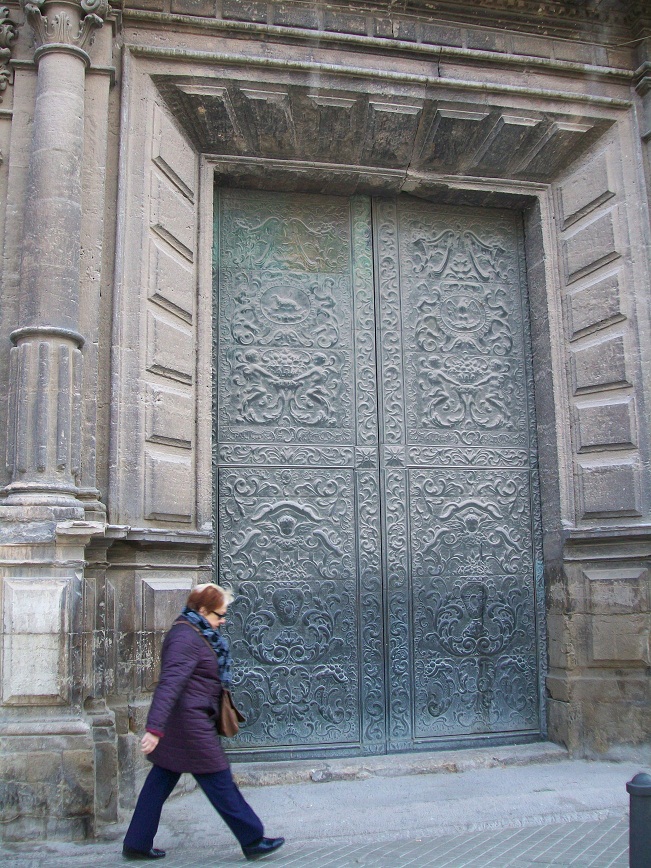
We got up early and drove to Valencia, about a two hour drive. Traffic was pretty heavy as we got into downtown, and we had to drive around for a while, looking for a place to park. We finally found a parking garage where we could leave the car for the day, since most of the places we planned to visit were within walking distance from each other.
When we came up from the underground garage, I was impressed by this church door:

...on a church which a sign identified as Real Parroquia de los Santos Juanes. Later in the day, I got a picture of the church itself:

Our first stop was Mercado Central:

...a large building filled with individual vendors' stalls - kind of like Farmer's Market, or, as Terry pointed out, like Grand Central Market in downtown L.A., but cleaner. There were stalls selling:

produce...
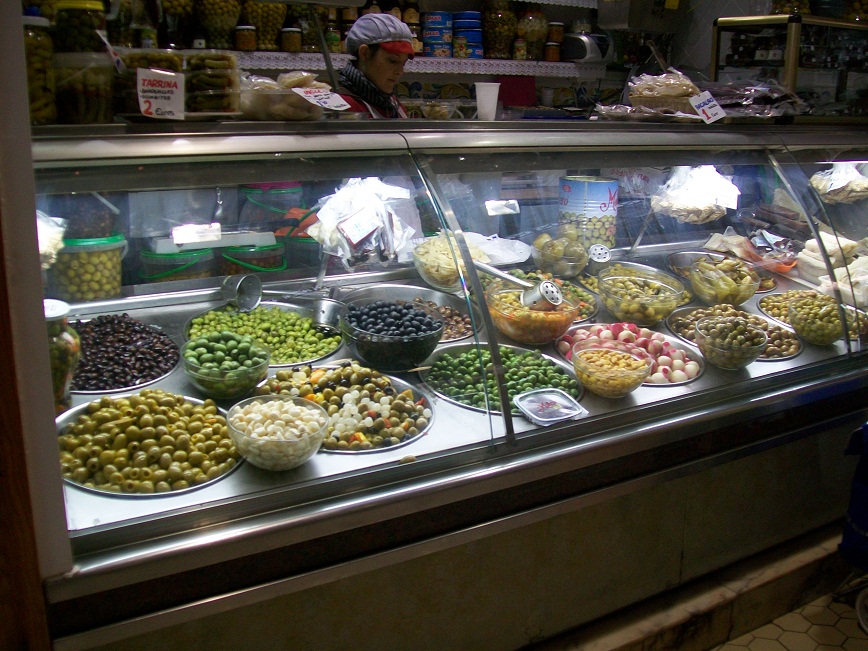
olives...
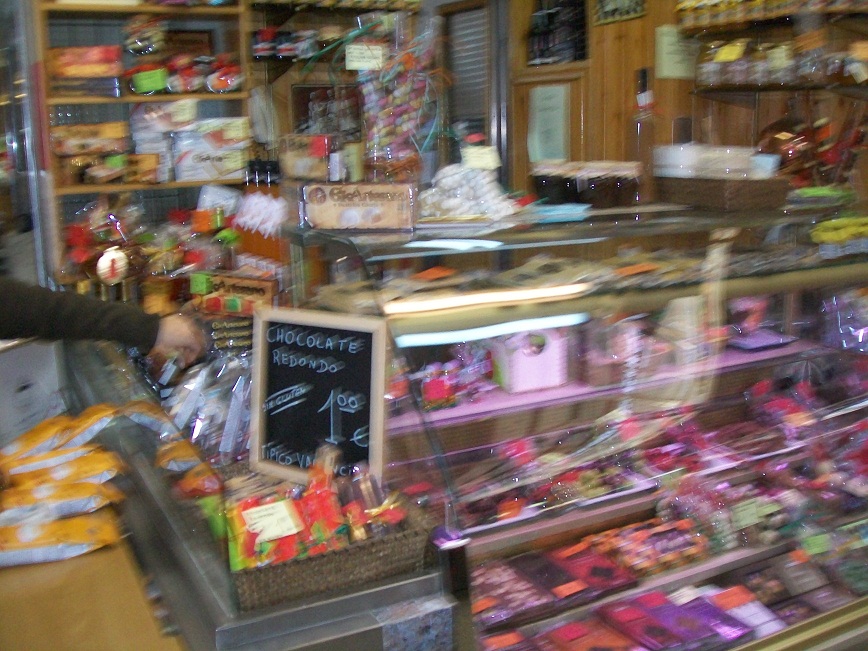
chocolate...
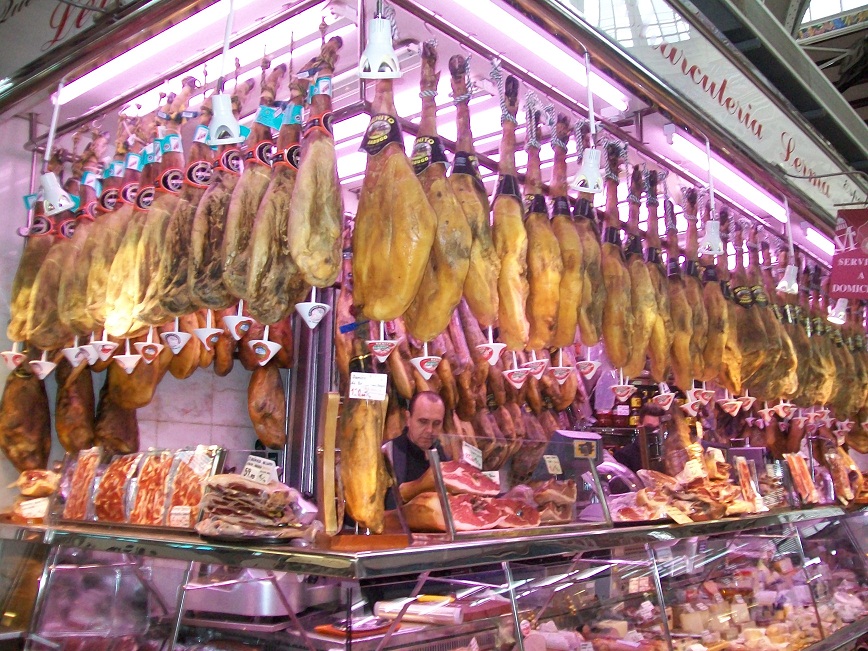
...and of course, ham
...as well as other stalls selling seafood, cheese, meat, etc., etc.
We had breakfast at the Mercado (picture on intro page), and then walked a few blocks to the Plaza de la Reina:

A brief digression: In Spain, there's an organization called ONCE (w), which stands for Organización Nacional de Ciegos Españoles (National Organization of Spanish Blind). The initials also spell out the Spanish word for "eleven," but I don't know if that has any significance. Anyway, it's an advocacy organization for blind and visually impaired Spainiards, which has quite a bit of clout (unlike in the U.S., where there are two major advocacy organizations, who unfortunately dissipate much of their effectiveness by fighting with each other... but I digress).
In Spain, ONCE members have a nationwide monopoly on selling lottery tickets. And as we entered Plaza de la Reina, I spotted an ONCE kiosk:
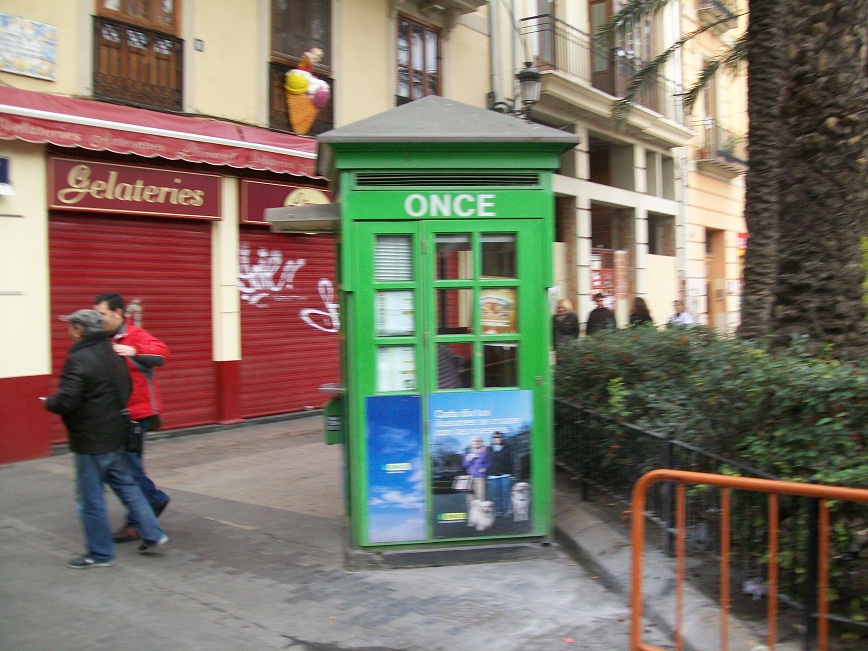
Terry went up and introduced herself to the woman running the kiosk, whose name was Chelo, and spent some time talking with her:
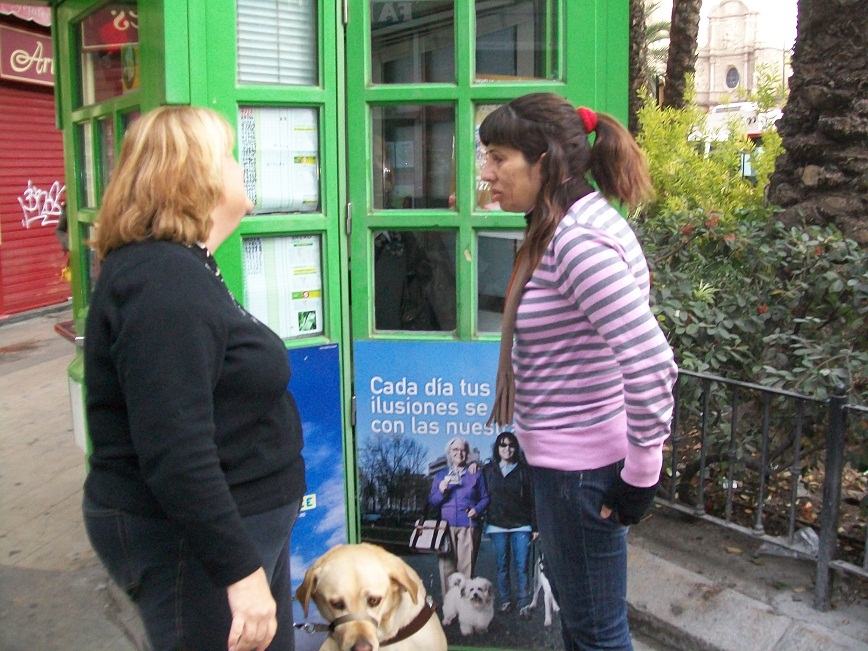
...while I took some more pictures:
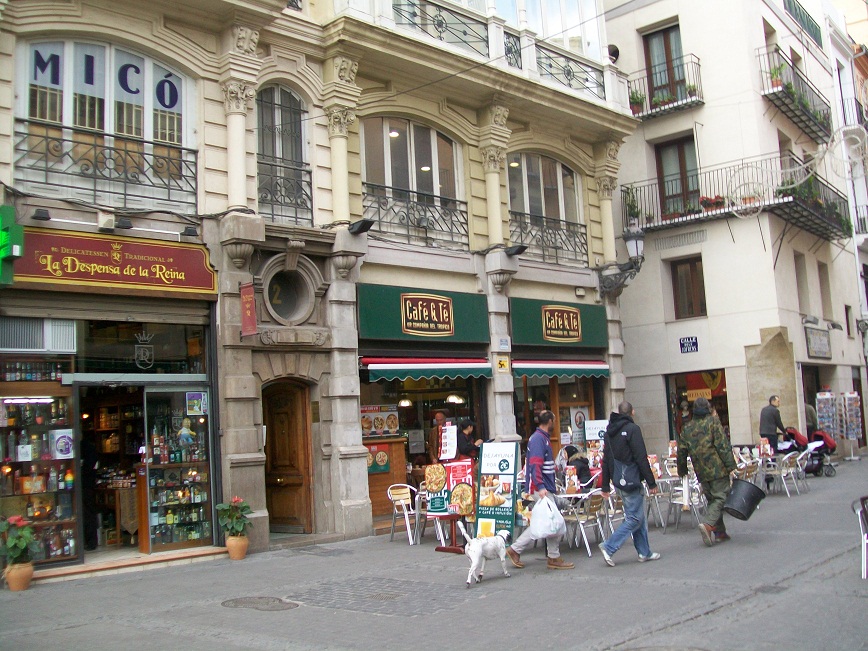
Shops at the Plaza

Bell Tower of the Iglesia de Santa Catalina
At the northern end of the Plaza, visible in the picture above, is the Iglesia Catedral-Basílica Metropolitana de la Asunción de Nuestra Señora de Valencia (Metropolitan Cathedral-Basilica of the Assumption of Our Lady of Valencia) (w), which was our next stop:
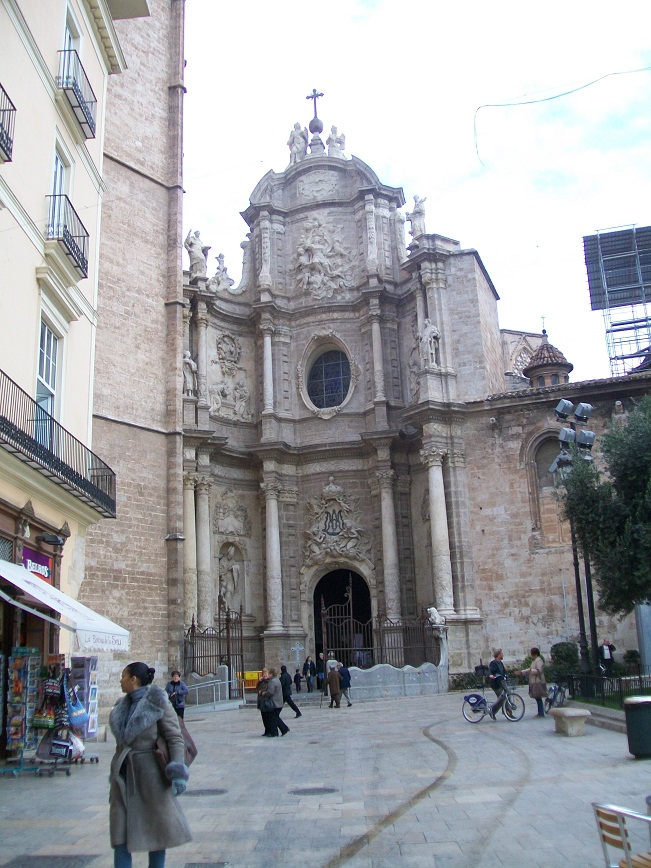
Cathedral Entrance
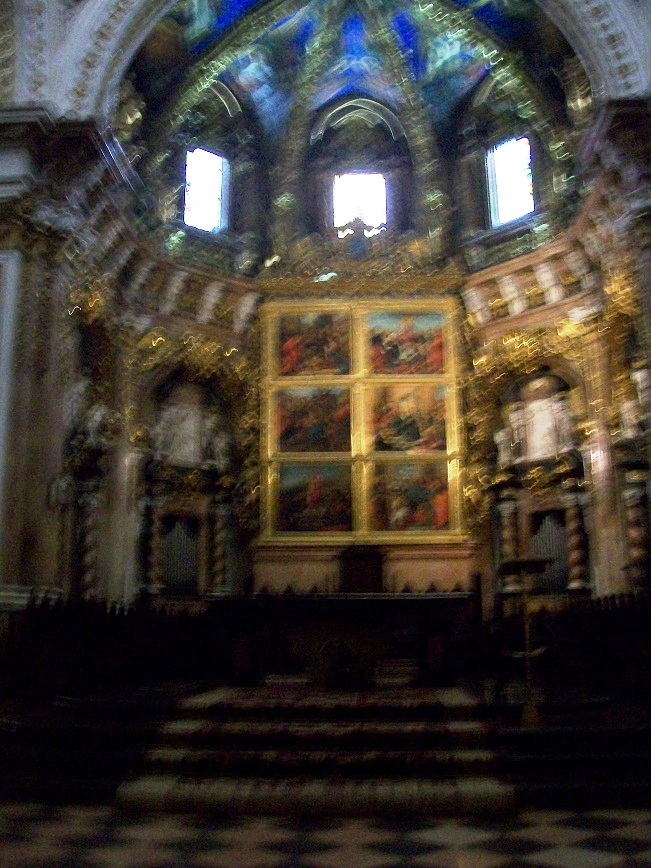
The Altar
Unfortunately, it was too dark inside for me to get a good picture of the altar.
There were several items of interest in the cathedral. One was a reliquary containing what purports to be the arm of St. Vincent of Saragossa (w), who was martyred in Valencia in the year 304:
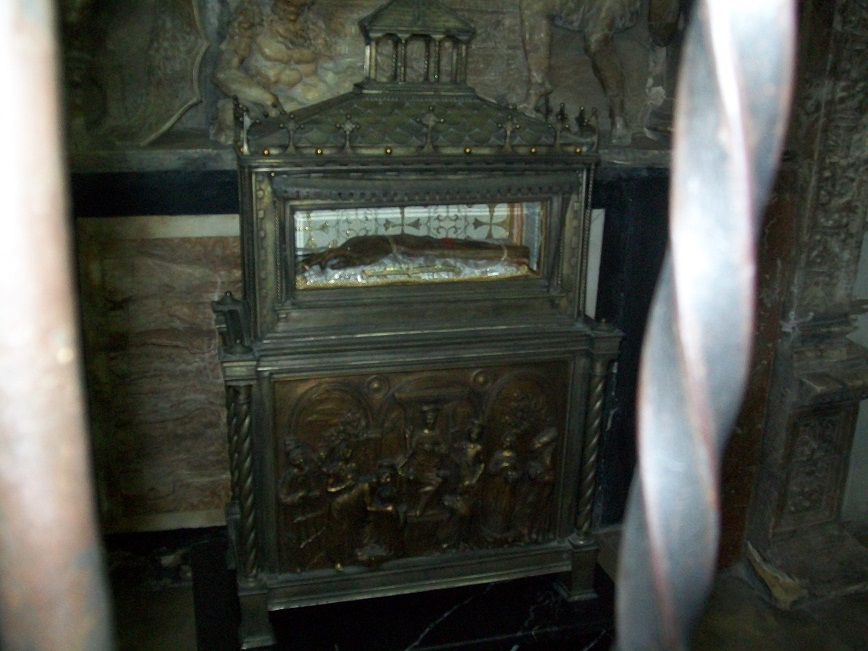
It's hard to tell in this picture, but trust me, that's an actual arm in that case.
Another item of interest was a chapel containing what purports to be the Holy Grail (w), that is, the actual cup used by Jesus and His disciples at the Last Supper. I tried to take a picture of it, but it didn't come out. But the Wikipedia article has a good picture.
There were also several paintings, including this one by Francisco Goya (w), titled St. Francis Borgia Helping a Dying Impenitent:
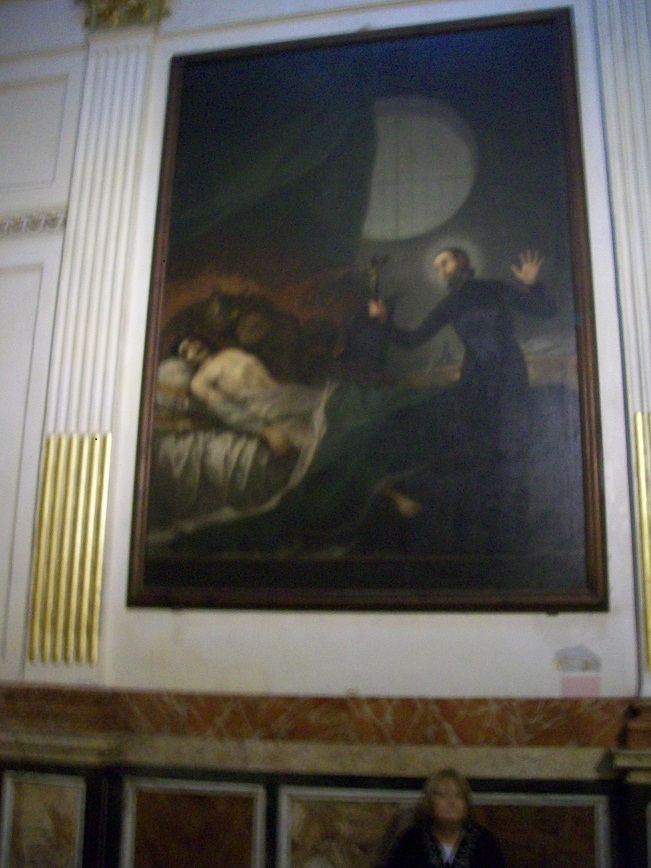
The picture didn't come out too well, so I found this picture on the Internet:
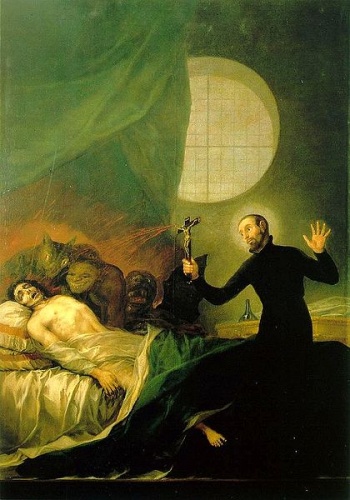
...in which you can clearly see the demons waiting to pounce on the dying man if he doesn't repent in time. Creepy.
We then walked around the corner to the Cripta arqueológica de la cárcel de San Vicente Mártir (Archeological crypt of the jail of Saint Vincent Martyr):
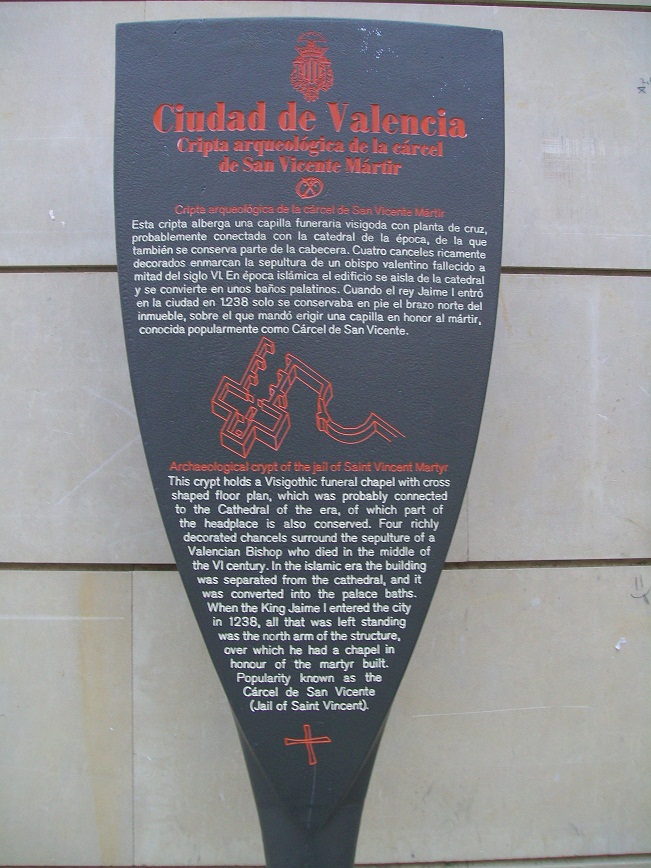
...which featured an interesting multimedia show describing the history of Valencia and St. Vincent (the same one whose arm we saw at the cathedral). We had a little while to wait until the next show started, so I took some pictures:
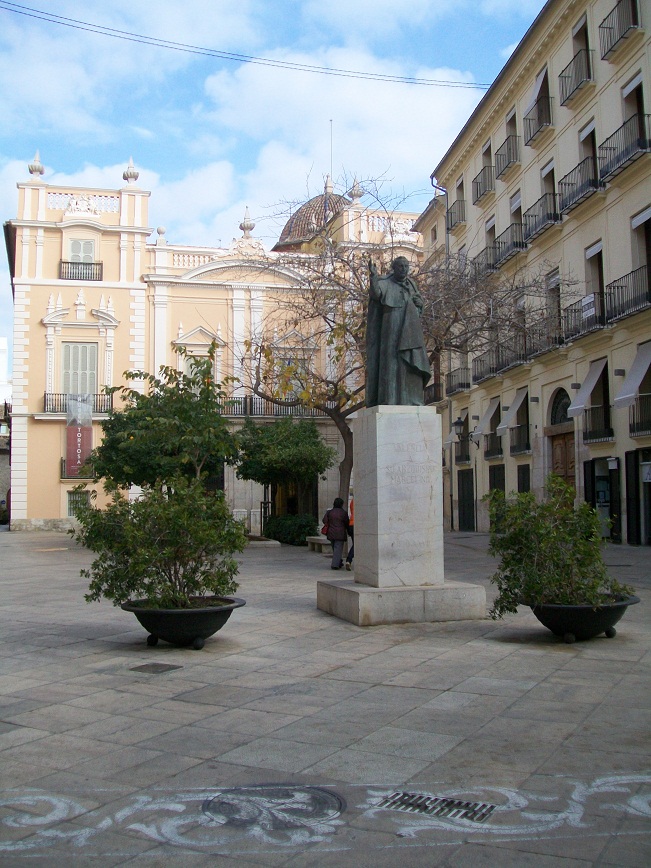
Statue of an Archbishop
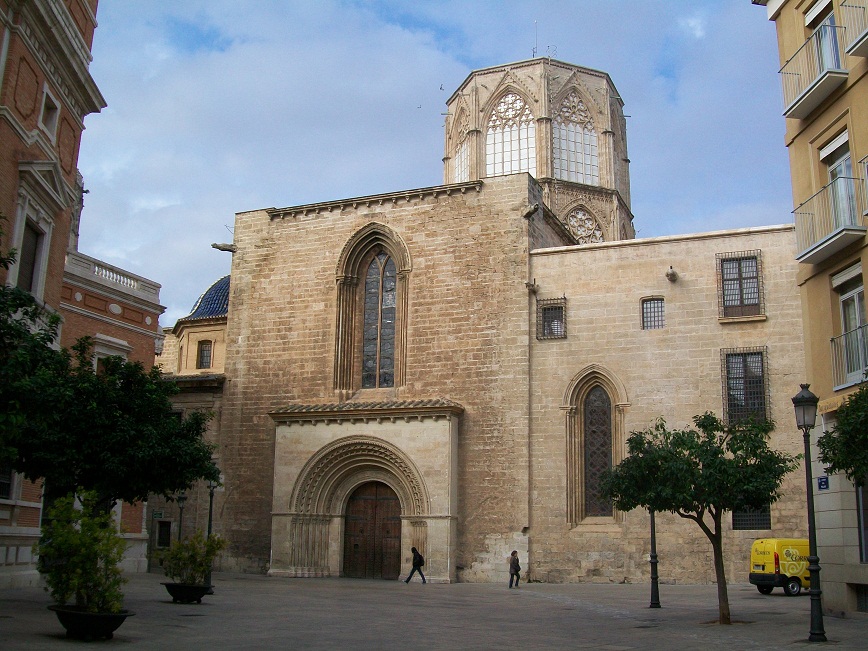
Side view of the Cathedral

An important looking building
I thought that building was some sort of government office, but when I asked, it turned out to be a church office building.
I mentioned earlier that I saw lots of orange trees on the train ride to Denia. Actually, I saw them all over Spain, in nearly every city we visited, and all along the roads between the cities. I was constantly tempted to pick one, but I refrained:

I also noticed that many, if not most, of the restaurants we visited offered fresh squeezed orange juice.
Our next stop was another archeological site, Baños de Almirante, Moorish baths that the guidebook said were functioning as recently as 1959. Unfortunately, they were closed:
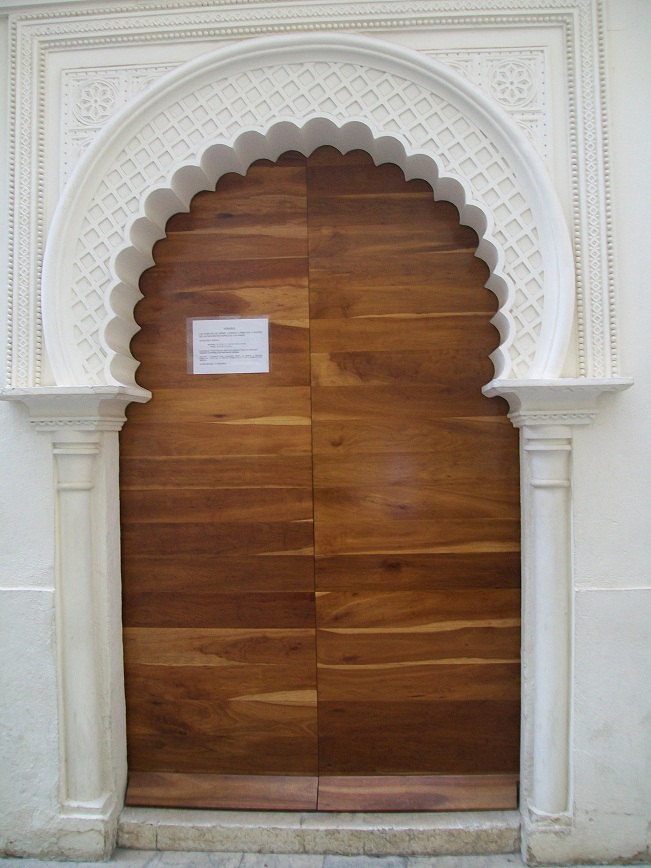
...so we went and had lunch, at a restaurant called La Utielana:
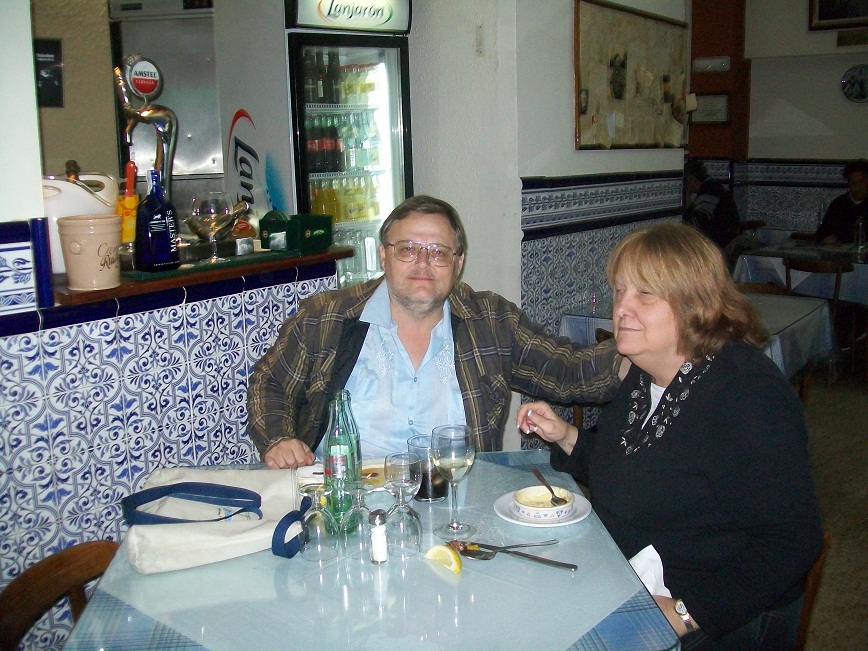
...which was a challenge to find, but worth the effort. When we were seated, we discovered that a woman at the next table also had a guide dog. The waitress was concerned about sitting us next to each other, but we assured her that there would be no problem... which there wasn't.
After lunch, while Terry took Trooper out, I took a picture of yet another church door:
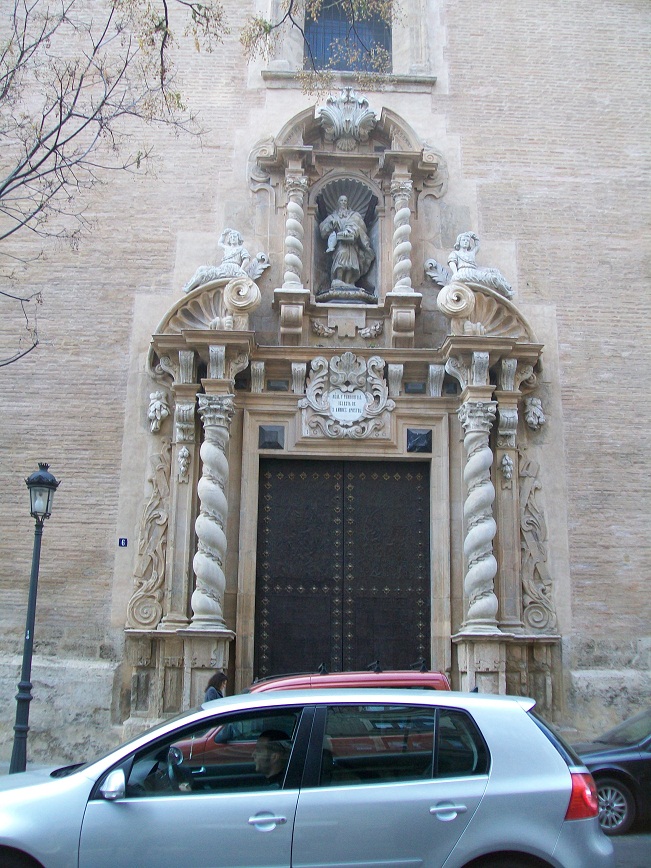
Spain has a lot of old churches, many of them with incredibly intricate and detailed carvings. Here's a picture of another church, which I'll throw in here, because I don't remember when I took it:

In the Plaza, I had noticed a sign advertising bus tours of the city, and we decided to try one. It was quite good, giving us an overview of the various parts of the city, old and new. They didn't have a live guide, but a recorded narration. Terry listened in Spanish, and I listened in English. Here's a link to the English version of their website. The English is somewhat fractured, but the site has a good description of the tour, and an interactive map of the route. We took Tour A, the Historical Tour.
Here are some things we saw on the tour, roughly in the order we saw them:
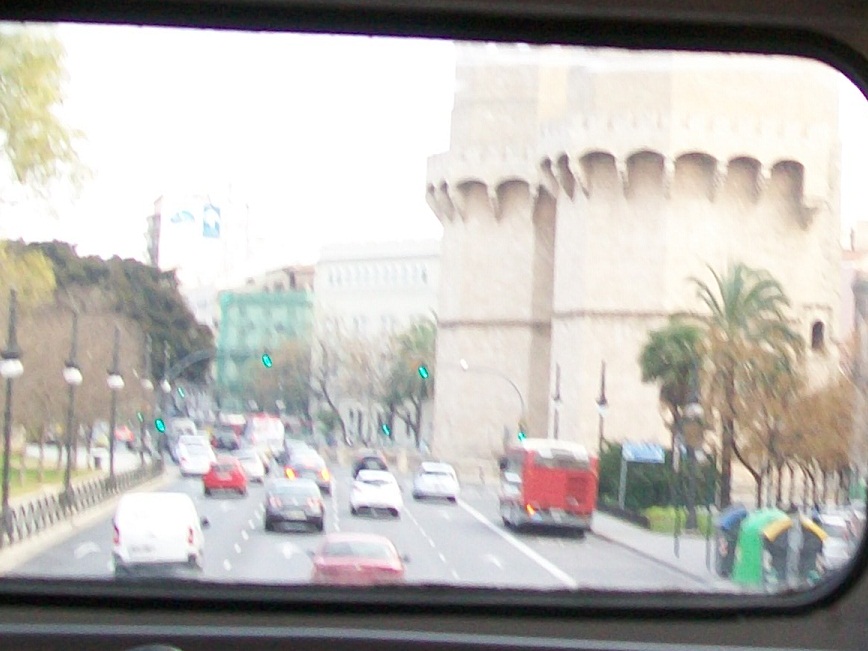

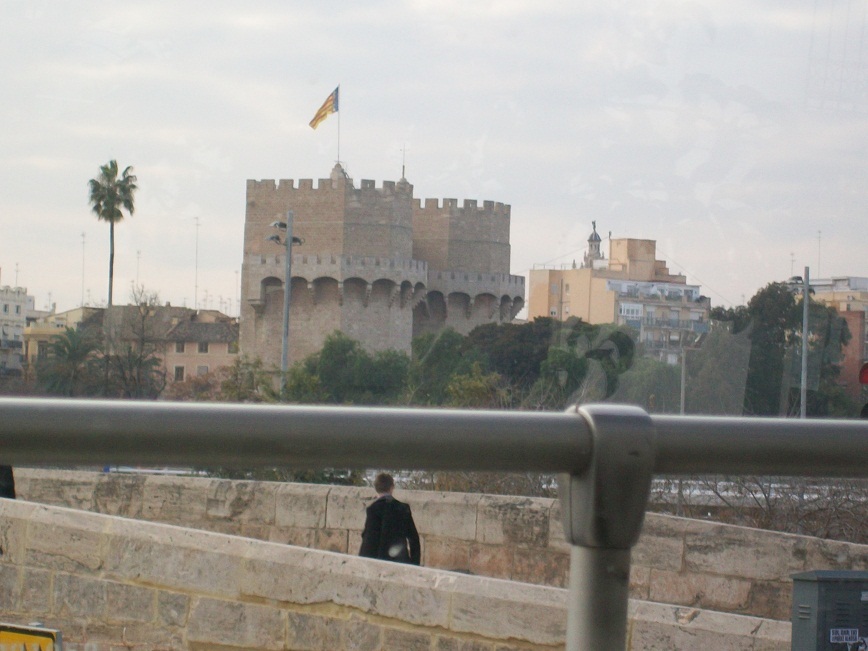
Torres de Serranos - former city gates
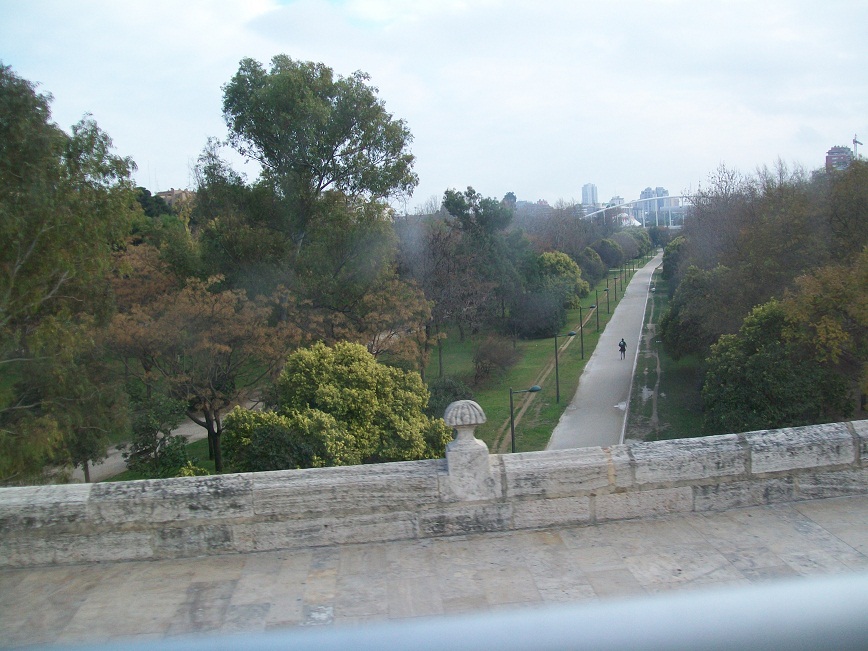
River Park - a park in what was the riverbed before the river was
diverted around the city

A modern church, which I took a picture of to highlight the
contrast with all the older churches and cathedrals

Palacio de Congreso, a modern convention center
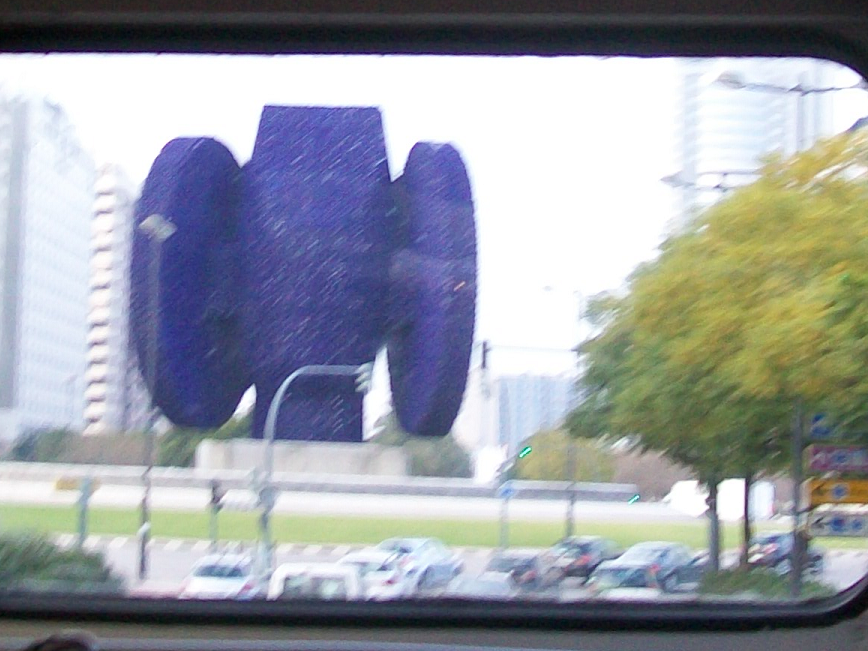
La Dama Iberica, a sculpture in the center of a traffic circle on
a major highway

A futbol (soccer) stadium
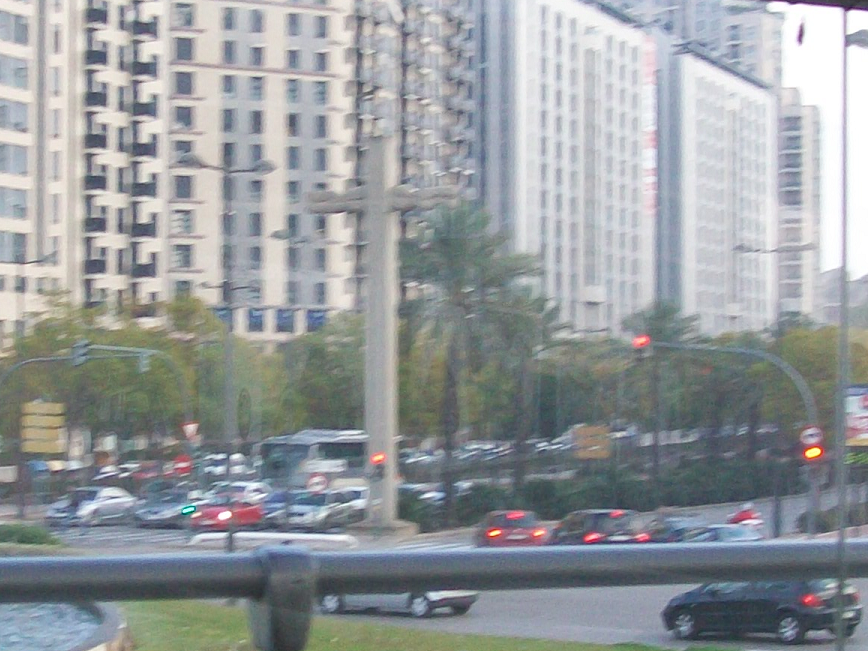
A large cross, which the narration informed us marked the original
northern limit of the city


Plaza Del Ayuntamiento (Government Plaza)

Banco de Valencia, in the Plaza Del Ayuntamiento
After the tour, we drove to another old city gate, the Torres de Quart:

Approaching the towers, you can see cannon damage from less peaceful times:

I parked the car and proceeded to climb to the top of one of the towers... over 400 steps! The last set of steps was narrow and winding, and dark. Here's a picture looking down from the top:
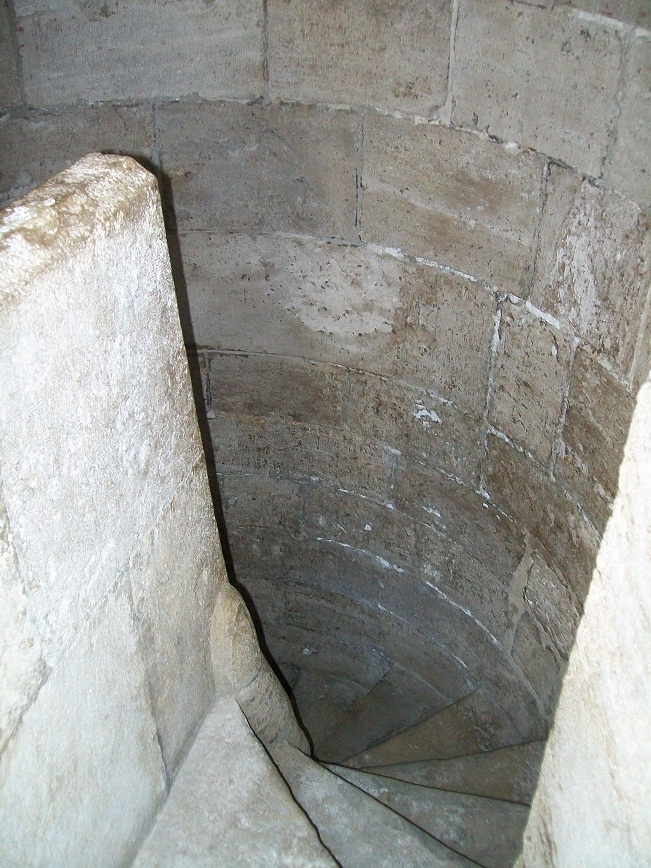
The flags of Spain and (I assume) Valencia fly proudly at the top of the tower:
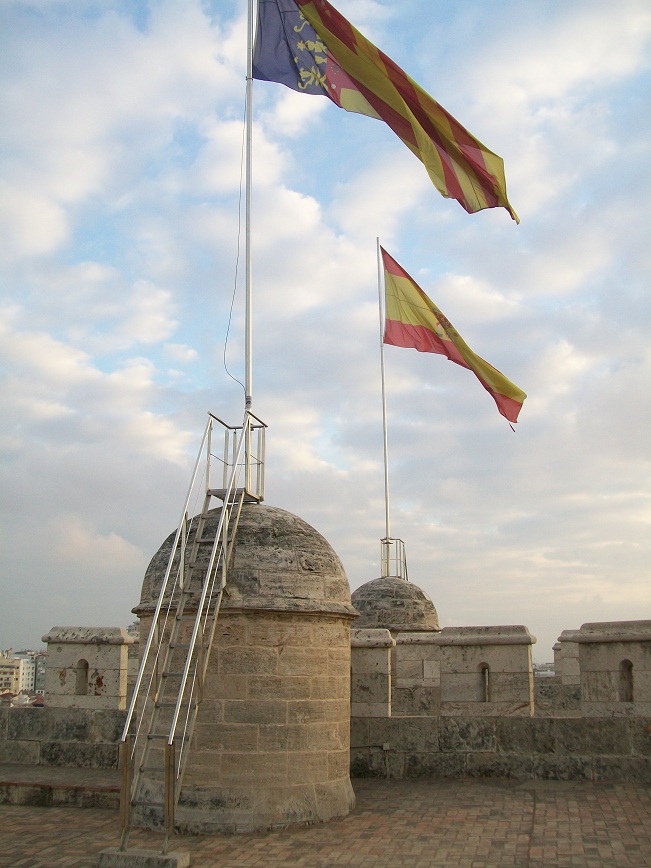
...and of course, you get a great view of the rooftops of Valencia:

On the way out of town, I took one last picture, of the train station:

We drove back to Calpe to feed Trooper, and then on to Benidorm to feed ourselves. La Cava Aragonesa, where we had lunch on the 9th, also has a tapas bar, which the guidebook claimed was one of the best in the country. It was certainly good - and very crowded and noisy.
Walking back to the car, Terry said she needed to find a bathroom. We stopped into an Italian restaurant, and after using the bathroom, Terry suggested that we order dessert, since she felt bad about using the bathroom without buying anything. Well, when we told the waiter what we wanted, he rather brusquely informed us that this was a restaurant, and we couldn't just order dessert! So we left.
Here's a map of Central Valencia, showing the locations of things we saw:
